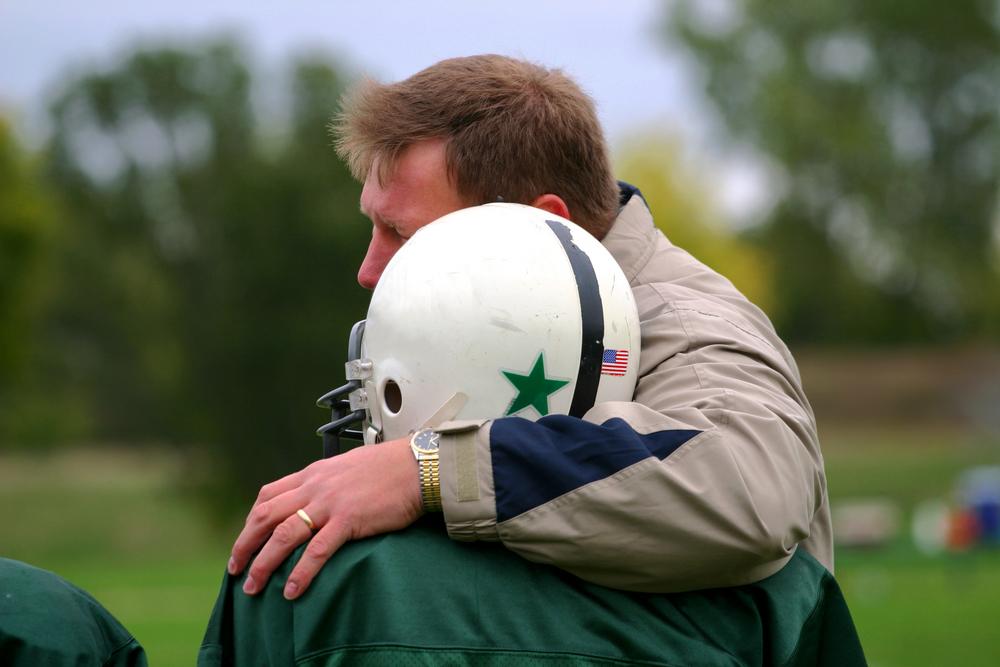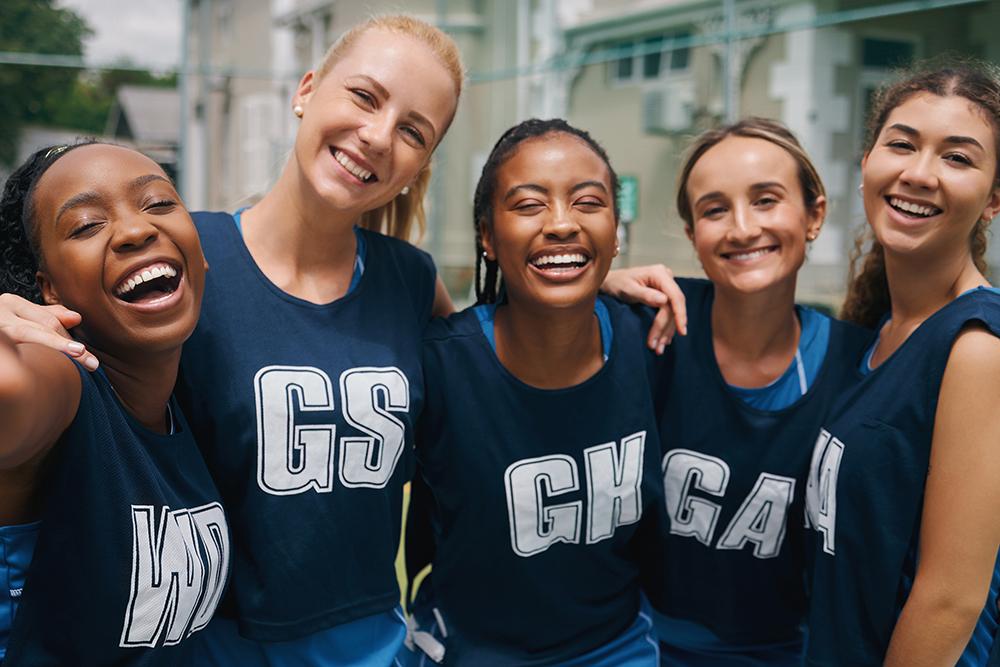 Have you been wondering how to teach your student-athlete how to set smart boundaries that help them succeed in school, sport, and life? It’s tempting to simply give them specific boundaries that reflect your values (like always prioritizing homework over practice, or not texting after 8 p.m.). But if your athlete never learns to set boundaries for themselves, they’ll struggle later in life when they do have more freedom. Rather than setting their boundaries for them, teach your athletes to think about decisions through a lens of values and goals.
Have you been wondering how to teach your student-athlete how to set smart boundaries that help them succeed in school, sport, and life? It’s tempting to simply give them specific boundaries that reflect your values (like always prioritizing homework over practice, or not texting after 8 p.m.). But if your athlete never learns to set boundaries for themselves, they’ll struggle later in life when they do have more freedom. Rather than setting their boundaries for them, teach your athletes to think about decisions through a lens of values and goals.
Here, board-certified family physician and TrueSport Expert Deborah Gilboa, MD, explains how you can help your athlete show their work when it comes to decision-making, and how the process will help them define better boundaries.
Understand what Boundaries Are—and What They Aren’t
Boundary-setting isn’t simply about ‘saying no’ to things—this is a common misconception that Gilboa often hears from parents and coaches. “Every time an athlete says yes to another team, another training session, or another practice, they are saying no to video games, spending time with their friends, or doing homework. Every time you say yes to something, you are saying no to something else.”
When it comes to setting boundaries, you have to first figure out your priorities and then align your choices to your priorities.”
Show, Don’t Tell
Aligning choices to priorities can be difficult, especially for student-athletes who often don’t have a lot of control over their lives. Things like homework, tests, practices, and games leave little room for flexibility. As a busy caregiver, you’re likely dealing with similar pressures. To best help your athlete, don’t lecture them about boundary-setting and aligning choices to their top priorities: Show them how you’re doing that. That might mean turning off your phone at dinner if you’re trying to prioritize family time or getting in that jog to prioritize your health, and then naming what you’ve done and why so that your athlete has a chance to take that in.
Define Family Priorities and Boundaries
You and your athlete both have your own priorities, but you also have priorities as a family that both of you need to be aware of and respect. If you decide that Thursday nights are family dinner nights, that means both you and your athlete need to be committed to that. “I encourage parents to be really clear about your family priorities,” Gilboa says. “Laying those priorities out ahead of time can reduce arguments in the future.”
Help Athletes Assess Their Priorities
Your athlete should also understand what their specific priorities are in any given season and recognize that those priorities will shift throughout the course of the year. Have your athlete write out their top five priorities, including things like their sport (and their goal for their sport), school (with a particular emphasis on classes that matter the most), social life, work, and health. Then, help them assess what a year can look like: For an athlete who primarily competes in the spring, schoolwork may be the top priority for the fall/winter, while sport will take the top spot in the spring. The summer can be a good time to let an athlete’s social life take priority.
Health Should Top the Priority Lists—Period
Finally, make sure that health is on the priority list for your athlete, yourself, and your family as a whole. Gilboa notes that it’s easy to end up pushing health down the priority list, but for all the other priorities to work, health needs to be considered. Often, health gets tied in with sport success, but Gilboa means health in a more wholistic sense. “It’s hard for athletes to prioritize their own health over a coach’s expectations or supporting a friend,” she says. “But if you don’t put your own health on that priority list and keep it there, you won’t be able to achieve the other priorities on the list.”
Help Athletes Audit Their Choices
 Do you remember having to ‘show your work’ when solving a math problem in high school? It’s a good way of confirming that you understand what you’re doing, and the same concept can be applied when making decisions.
Do you remember having to ‘show your work’ when solving a math problem in high school? It’s a good way of confirming that you understand what you’re doing, and the same concept can be applied when making decisions.
“Once your athlete has decided on their priorities and knows what they’re currently focusing on, you can ask them to show their work whenever they’re faced with a decision or choice,” Gilboa says. For example, if your athlete has prioritized their sport but wants to go to a late movie on Friday night before an early game on Saturday, ask them to write out how going to that movie will help or hinder their priority of performing well. They’ll likely see that choosing the movie isn’t the right decision for them—or maybe they’ll try to get their friends to go to an earlier showing.” And if they stick with the late movie, they will learn if that does or does not impact their performance. That’s how they learn!
To prompt this discussion, try a simple cue like, “Talk to me about your thought process behind that.”
Use a Health or Long-Term Filter to Audit Choices
Often, your athlete may forget to include the health or long-term impacts of certain choices, particularly when it comes to playing their sport while ill or injured. As the caregiver, you need to help them do a thorough audit of the decision to play through an injury, focusing not just on that one game that they might make it through, but on the long-term ramifications of potentially exacerbating an injury. “It’s helpful to remind your athlete that if they play on an injured knee and create long-term damage, they may not be able to be an athlete anymore, so the decision not to play is actually the better one as an athlete,” Gilboa says. And when necessary, you may need to make the decision for them to preserve their health.
Lead with Curiosity and an Open Mind
You may initially use the “Talk to me about your thought process behind that decision” cue to nudge an athlete to change their mind about a decision that you don’t believe is correct. But Gilboa notes that this process only works if you’re willing to be proven wrong. “You need to talk to your athlete with actual curiosity and an open mind,” she says. “Ask them to check their work and show you how they came to a decision. And it’s entirely possible that they’re making the right call.”
Help Your Athlete Reduce Feelings of Overwhelm
Finally, this filter of showing their work can be used to help an athlete reduce overwhelm by regularly checking in on their priorities and how their actions are aligning. “Often, making decisions themselves can add to feelings of overwhelm,” Gilboa says. “Having this way to quickly assess a decision can help your athlete find their answer more easily and faster, and to feel as though they’re making a decision that does align with their goals.”
________________________
Takeaway
As a caregiver, you have the ability to help your athlete set boundaries that make sense for them. The best way to help them make the tough decisions that they need to be healthy and successful is by teaching them to audit their choices. Ask your athlete to ‘show their work’ around decisions to ensure they align with their goals and values.



